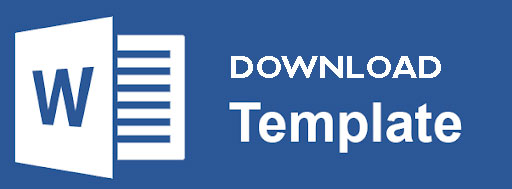Analysis of Narrative Writing Skills Among Junior High School Students in Indonesia
Abstract
Writing is a critical skill for English language learners, enabling them to express ideas effectively. This study investigates the narrative writing abilities of second-grade students at SMPN 5 Wonomulyo, Indonesia, focusing on five key aspects: content, organization, vocabulary, language use, and mechanics. Employing a mixed-method approach, data were collected through writing tests and teacher interviews. The findings reveal that a majority of students (60%) failed to meet the minimum standard of writing proficiency. Content and vocabulary were identified as the most challenging aspects, with many students struggling to generate coherent ideas and use appropriate language. Interviews with the teacher highlighted contributing factors, including limited vocabulary, lack of practice, and reliance on conventional teaching methods. The study emphasizes the need for innovative, student-centered approaches to enhance narrative writing skills, such as collaborative writing exercises, peer feedback, and digital storytelling tools. Vocabulary enrichment and regular writing practice are also critical for improving performance. This research contributes to the body of knowledge on EFL writing and offers practical recommendations for improving teaching practices.
References
Chai, A., & Hamid, A. H. A. (2023). The impact of flipped learning on students’ narrative writing. International Journal of Advanced Research in Education and Society, 4(4), 159–175.
Creswell, J. W., & Clark, V. L. P. (2017). Designing and conducting mixed methods research. Sage publications.
Damayanti, E., Supriusman, S., & Azhar, F. (2024). Indonesian High School Students’ Ability in Comprehending Narrative Texts. International Journal of Educational Best Practices, 8(1), 140. https://doi.org/10.31258/ijebp.v8n1.p140-153
Hellystia, D., & Hermawati, S. (2024). Leveraging L1 Folklore: Enhancing Fictional Narrative Writing with Metacognitive Strategies in Blended Learning Environments. 3L The Southeast Asian Journal of English Language Studies, 30(2), 263–279. https://doi.org/10.17576/3L-2024-3002-16
Hyland, K. (2019). Second language writing. Cambridge university press.
Isma, A., Hermansyah, S., Ramadhani, Y. R., Lestari, I. W., Evenddy, S. S., Talenta, P. I., Sastri, L., Rasmin, L. O., Febrianto, A. R., & Pavita, M. D. A. (2023). Teaching English to 21st Century Learners (1st ed.). Yayasan Kita Menulis.
Isma, A., Lestari, I. W., Rohimajaya, N. A., Hardiyanto, A., Susanti, E., Meisarah, F., Novia, S., Kuning, D. S., Hamer, W., & Rasmin, L. O. (2024). Digital Tools for English Language Learning: A Comprehensive Guide for EFL Educators (1st ed.). Yayasan Kita Menulis.
Isma, A., Putri, A. M. J., & Sardi, A. (2024). Examining University Students’ Business English Writing Performance: Frequent Errors and Pitfalls. Research and Innovation in Applied Linguistics [RIAL], 2(2), 79–94. https://doi.org/10.31963/rial.v2i2.4446
Isma, A., Rasmin, L. O., & Samsudin, S. (2023). Decoding the Challenges: A Study of English Writing Errors Among EFL Students. GLENS: Global English Insights Journal, 1(1), 1–9. https://doi.org/10.61220/glens.v1i1.2023a1
Jacobs, H. L. (1981). Testing ESL composition: A practical approach. English composition program. ERIC.
Knapp, P. (2005). Genre, text, grammar: Technologies for teaching and assessing writing. University of New South Wales Press Ltd.
Laia, W. (2024). An Analysis of Grammatical Errors on Students’ Writing Narrative Text of Second Grade at SMA Negeri 2 Hilimegai. Research on English Language Education, 6(1), 65–80.
Manthofani, M. T., Saifulloh, A. I., & Lindawati, R. (2024). Transforming EFL Students’ Narrative Writing Through Gamification. Philosophiamundi, 2(4), 221–228.
Nabella, A. C. R., & Rini, S. (2023). The Effectiveness of Using Genre Based Approach to Enhance Reading Comprehension in Narrative Text for Young Learners. Jurnal Teknologi Pendidikan : Jurnal Penelitian Dan Pengembangan Pembelajaran, 8(4), 758. https://doi.org/10.33394/jtp.v8i4.8643
Novita, A. T., Saifulloh, A. I., & Lindawati, R. (2024). The Effectiveness of Multimodal Texts to Enhance Writing Narrative Text of EFL Students. Jurnal Bintang Pendidikan Indonesia, 2(4), 117–142. https://doi.org/10.55606/jubpi.v2i4.3286
Richards, J. C., & Rodgers, T. S. (2014). Approaches and methods in language teaching. Cambridge University Press.
Schmitz, A., & Dannecker, W. (2023). Strategies for Expository and Narrative Texts: Students’ Perspectives on Text Type-Specific Cognitive and Metacognitive Reading Strategies. L1-Educational Studies in Language and Literature, 23, 1–22. https://doi.org/10.21248/l1esll.2023.23.1.407
Vandermeulen, N., Lindgren, E., Waldmann, C., & Levlin, M. (2024). Getting a grip on the writing process: (Effective) approaches to write argumentative and narrative texts in L1 and L2. Journal of Second Language Writing, 65, 101113. https://doi.org/10.1016/j.jslw.2024.101113
Yana, F. (2024). The Correlation between Student Reading Habit and Their Ability of Writing Narrative Text. BRIGHT VISION Journal of Language and Education, 4(2), 173. https://doi.org/10.30821/brightvision.v4i2.3877















 Email: ilerejournal@gmail.com
Email: ilerejournal@gmail.com
